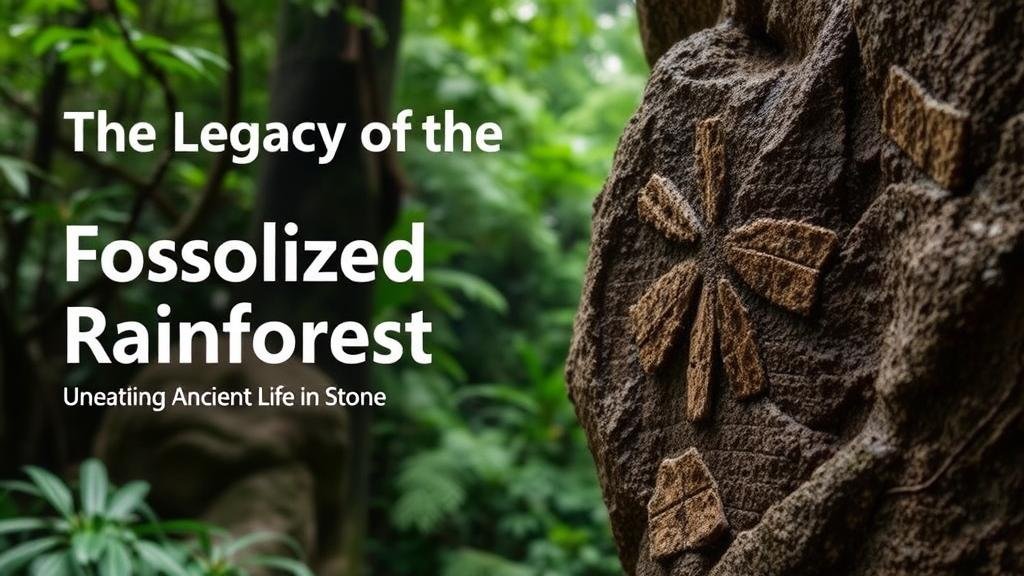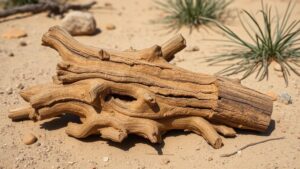The Legacy of the Fossilized Rainforest: Unearthing Ancient Life in Stone
The Legacy of the Fossilized Rainforest: Unearthing Ancient Life in Stone
The world of rockhounding and mineral collecting is rich with wonders and stories waiting to be discovered. Among the most fascinating tales comes from the fossilized rainforests, which encapsulate vibrant ecosystems that thrived millions of years ago. These ancient remnants not only offer a glimpse into our planets past but also captivate collectors and enthusiasts alike. This article delves into the remarkable legacy of fossilized rainforests, focusing on how they inform us about ancient life and provide practical insights for rockhounds and mineral collectors.
Understanding Fossilized Rainforests
Fossilized rainforests are primarily preserved as fossil beds, usually found in sedimentary rock formations. These formations hold an extraordinary array of fossils, including plant materials, insects, and sometimes even vertebrate remains. One notable example is the Ginkgo biloba, a living fossil believed to have existed for over 270 million years, whose leaves are often found in fossilized states.
The process of fossilization typically occurs when organic materials are buried under sediment, preventing decay and allowing mineral-rich water to permeate the remains. Over time, this mineralization transforms the organic matter into stone-like replicas, preserving the intricate details of ancient life.
Geological Significance and Locations
Fossilized rainforests can be found in various parts of the world, including Western North America, South America, and parts of Europe. One significant site is the Fossil Forest of the John Day Fossil Beds National Monument in Oregon, where ancient trees and diverse plant life from the late Eocene epoch (about 45 million years ago) are preserved. This site boasts fossils of giant redwoods, ferns, and more, offering rockhounds an excellent opportunity to explore and collect relics of a bygone era.
To illustrate their geological significance, studies of fossilized rainforests offer insight into ancient climates and ecosystems. For example, paleobotanical studies reveal that some fossilized forests thrived in warmer, wetter climates than we see today, demonstrating how climate change has shaped biodiversity over millennia.
Collecting Tips for Rockhounds
For those inspired to start their own collection of fossilized rainforest specimens, here are some essential tips:
- Research Locations: Identify fossil-rich regions and ensure you understand local laws regarding collecting. Many sites require permits or have restrictions to protect fragile ecosystems.
- Use Proper Tools: Equip yourself with the necessary tools such as a rock hammer, chisels, protective goggles, and a sturdy backpack for transportation.
- Handle with Care: Fossil specimens can be delicate. Always take gentle measures when extracting fossils from their matrix to avoid damaging them.
- Join Local Clubs: Connecting with local rockhounding clubs can provide access to group field trips and knowledge-sharing opportunities, enhancing your collecting experience.
Real-World Contributions of Fossilized Rainforests
Fossilized rainforests contribute significantly beyond aesthetic appeal or rarity for collectors. have practical applications in various scientific fields:
- Paleoecology: Understanding the interactions within ancient ecosystems helps scientists grasp how current biodiversity may respond to ongoing climate changes.
- Climate Science: Fossilized remains reveal past climates, enabling researchers to create models predicting future climatic shifts based on historical data.
- Education and Public Awareness: Museums and educational institutions utilize fossilized specimens to teach about evolution, ecology, and conservation, spotlighting the urgency of protecting existing rainforests.
Conclusion: Embracing the Past for a Sustainable Future
The legacy of fossilized rainforests serves as both a historical narrative of Earth’s biodiversity and a crucial tool for understanding environmental changes. For rockhounds and mineral collectors, these ancient treasures are not only collectibles but educational artifacts that illuminate the complexities of natural history. By engaging with these remnants of the past, collectors actively contribute to ongoing dialogues about conservation and sustainability.
As you embark on your journey into the world of fossilized rainforests, remember the profound stories contained within each specimen and strive to treasure and protect these remarkable pieces of planetary heritage.



